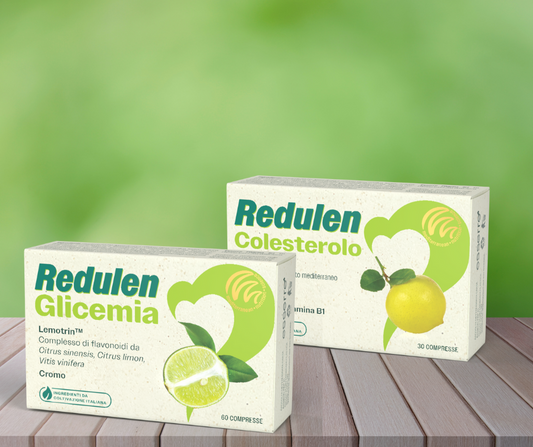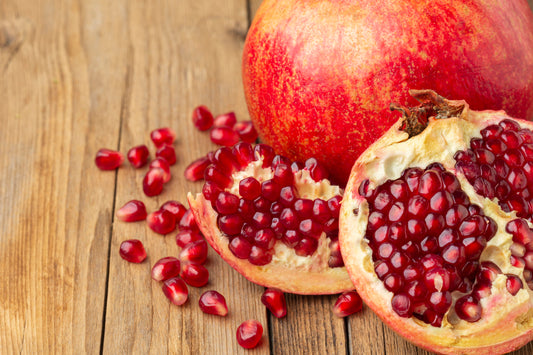Main types: soluble, viscous, insoluble, prebiotics and food supplements.
Dietary fiber is a set of plant-based compounds characterized by resistance to hydrolysis by digestive enzymes and absorption in the small intestine. This characteristic makes fiber essential for intestinal health and for many other metabolic functions, which we will examine in detail.
Dietary fiber consists of two subgroups:
-
soluble fiber
-
insoluble fiber
By soluble/insoluble we mean a different capacity for interaction with water or aqueous solutions represented by gastric and intestinal fluids.
Soluble fiber
This fiber is made up of oligosaccharides and polysaccharides with variable molecular weight, which differ from each other in the length and branching of the carbon chains, as well as in the presence of different functional groups. The soluble fiber with a higher molecular weight and a branched structure (also called gelling fiber, such as pectins, gums and beta-glucans) is capable of absorbing water in large quantities and relatively quickly through osmotic mechanisms, unlike the soluble oligosaccharide fiber (such as fructo-oligosaccharides - FOS, and galacto -oligosaccharides - GOS) which, in contact with aqueous solutions, solubilizes without giving rise to gel .
Solubility, in turn, is related to two fundamental functional properties of this type of fibre, viscosity and fermentability .
-
Viscosity: depending on their molecular weight, soluble fibers contribute differently to making the solutions in which they dissolve viscous and consequently perform different biological properties. In particular, soluble fibers that form viscous solutions contribute to the control of glycemia and cholesterolemia, thanks to the sequestering action on nutrients such as sugars and lipids, exerted by the viscous solutions that are generated in the intestinal lumen, and perform a normalizing effect on the stool, softening hard stools, typical of constipation, or firming liquid stools typical of diarrhea and limiting fecal incontinence. Furthermore, the portion of soluble gelling fiber that reaches the colon unchanged can be fermented by the intestinal microbiota with a prebiotic effect. Soluble fibres, which due to their low molecular weight do not form viscous solutions, do not perform, except to a minimal extent, hypoglycaemic, hypocholesterolemic or stool-normalising activity , but are nevertheless important as they are readily fermentable by the eubiotic intestinal microflora.
-
Fermentability: most of the components of soluble fiber (both the gelling type and the type that does not form viscous solutions) are fermentable by the colonic bacterial microflora, with the production of methane, carbon dioxide, water and short-chain fatty acids ( SCFAs ) essentially represented by acetic, propionic and butyric acids. The fermentation products of soluble dietary fiber that have the greatest impact on both intestinal health and at a systemic level are the SCFAs that regulate the functionality of the epithelial barrier and the immune system, directly and indirectly influencing immunity in extra-intestinal sites, such as the liver, lungs, urogenital tract and brain, perform anti-inflammatory activity, have direct effects on the differentiation of intestinal epithelial cells, phagocytes, B lymphocytes, plasma cells and regulatory and effector T cells.
Soluble fibres are represented by:
-
pectins , present in fruit, especially citrus fruits (peel and pith), and in many other fruits such as apples and plums, but also in vegetables such as carrots;
-
gums , which form a rather sticky jelly, are abundant in legumes, cereals such as oats, and guar seeds ( guar gum , used by the food industry as a thickener);
-
mucilages , substances capable of producing a rather viscous gel that retains water (in nature their function is often to prevent the dehydration of the seeds, in which they are concentrated, as in flax seeds;
-
soluble short-chain hemicelluloses (which include beta-glucans, present in oats, barley, rye and arabinoxylans , abundantly present in cereal tissues) which constitute a family of interesting fibres, since they are carbohydrates which, as the chain lengthens, pass from being soluble to insoluble fibres, and in fact with the same name we also find these compounds in the category of insoluble fibres;
-
fructans , soluble carbohydrates very common in the plant world which include, among others, FOS, present in large quantities in the root of chicory (their main industrial source) but also in onions, garlic, leeks, artichokes and other vegetables as well as in cereals, inulin, a polymer with a similar structure to that of FOS, but with a longer chain, and levans (obtained from fungi and bacteria);
-
GOS which are also the first fibres we come into contact with after birth, being present in breast milk with the aim of promoting the settlement of the first bacterial strains of the intestinal flora in the newborn's intestine, which is initially sterile, with which it comes into contact already during birth;
-
resistant starch which has recently been included in dietary fibre and consists of the portion of starch that is not digestible but which the intestinal flora uses as nourishment, fermenting it and can derive from starch trapped in the cellular matrix, or with a crystalline structure, or retrograded during cooking.
Soluble fiber has its first effects in the stomach, where the gelatinous and viscous mass slows gastric emptying. The result is a sense of satiety that can limit food intake and therefore be helpful in diets aimed at controlling or reducing body weight. Other effects occur in the small intestine, where the gelatinous mass of the fiber, swollen with water, is able to delay the absorption of glucose and, consequently, the increase in the post-prandial glycemic peak, and in total and LDL cholesterol, with significant beneficial effects on hypercholesterolemia , a recognized cardiovascular risk factor. Finally, in the colon, soluble fibers are degraded (fermentable fibers), and therefore, although they cannot contribute to the growth of intestinal fecal mass, useful for the purpose of faster and easier evacuation, they induce a positive change in the bacterial flora towards a state of eubiosis through fermentation (Desai et al., 2016).
Insoluble fiber
This fiber is mainly composed of high molecular weight polysaccharides and variable portions of lignin, which, although not a polysaccharide, is included in insoluble fiber. Due to its high molecular weight, once it reaches the colon intact, insoluble fiber tends to organize itself into crystalline structures and to expel part of the hydration water. The capacity of insoluble fiber to retain water is also influenced by the size of the particles, i.e. the granulometry. Insoluble fiber, which is not fermented by the bacterial microflora of the colon, produces an increase in the weight of the fecal mass, causes the distension of the intestinal wall by stimulating peristalsis which translates into a mechanical effect, speeding up the transit of the fecal mass itself. This produces positive effects on constipation as well as in the prevention and treatment of diabetes, dyslipidemia and obesity, as well as in that of some forms of tumors of the large intestine (colon and rectal cancer). Insoluble fibers are represented by:
-
cellulose , abundant in cereals, vegetables and legumes, in which it has a structural support role;
-
insoluble , long-chain hemicelluloses , mainly present in cereals;
-
lignin , which is a polymer composed of phenylpropene , present in practically all plants where it constitutes a large part of the cell wall.
Insoluble fibre also includes cutin, which is not a carbohydrate but a waxy substance present in many plants for anti-dehydration purposes, chitin and chitosan , present in the shells of crustaceans (therefore of animal origin) and in mushrooms, which have recently attracted the interest of nutritionists because they easily bind to fats, limiting their intestinal absorption.
Diets rich in fiber have multiple health benefits such as :
-
lowering of cholesterol and plasma triglycerides , useful for reducing the risk of heart disease
-
lowering blood sugar , which helps diabetics control their blood sugar levels
-
increasing fecal mass , promoting evacuation and helping to prevent constipation
-
modulation of the composition and functionality of the intestinal microbiota, promoting a state of eubiosis
-
control and reduction of body weight through the reduction of the absorption of caloric nutrients such as sugars and lipids ( Dhyngra et al. 2012).
To demonstrate the beneficial effects of dietary fiber, numerous in vivo and clinical studies have been conducted in recent decades, so that meta-analyses of clinical trials are now available in the scientific literature, often drawing definitive conclusions about the important benefits provided by the consumption of dietary fiber through fiber-fortified foods or food supplements, even if the results are sometimes contradictory, indicating the need to continue research, especially with clinical studies of a high scientific level.
Below is a recent meta-analysis published in 2021 by Ojo et al. who, starting from the assumption that an imbalance of the intestinal microbial community is closely associated with systemic inflammation and metabolic syndrome, including type 2 diabetes and that, while low-fiber and high-fat diets can lead to dysbiosis of the intestinal microbiome due to the reduction or loss of eubiotic microorganisms, while high-fiber diets can prevent protein fermentation and promote eubiosis of the intestinal microbiota, wanted to evaluate the effect of dietary fiber on the microbiota, lipid profile and inflammatory markers in patients with type II diabetes. The systematic review of the literature led to the identification of 11 studies of which 10 were included in the meta-analysis. The results revealed five distinct areas, including the effects of fiber on
(a) intestinal microbiota (122 participants);
(b) lipopolysaccharides (LPS, 79 participants) and lipopolysaccharide -binding proteins (LBP, 81 participants);
(c) lipid profile;
(d) inflammatory markers; and
(e) body mass index (BMI, 319 participants).
The results showed that in the group treated with dietary fiber there was a statistically significant increase in the relative abundance of Bifidobacterium and a significant decrease in LPS, total cholesterol, and BMI compared to the control. Although dietary fiber did not appear to have a significant effect on LBP, triglycerides, HDL-cholesterol, LDL-cholesterol, IL-6, TNF-α, adiponectin, and leptin, these results are a clear demonstration that fiber intake has important health implications and that the use of dietary fiber in nutritional interventions may represent an interesting strategy for the management of type 2 diabetes.
Among the most interesting and recently published meta-analyses is the one published in 2023 by Lee et al. This meta-analysis aimed to evaluate how the consumption of fiber-enriched foods could change body composition, blood pressure, lipid profile and biochemical parameters related to carbohydrate metabolism. The searches were carried out using 5 databases that allowed to identify 31 randomized controlled trials whose results were subjected to meta-analysis. The study demonstrated that fiber-enriched foods significantly reduce body weight, fat mass, total cholesterol, low-density lipoprotein cholesterol (LDL-C), triglycerides, fasting plasma glucose and glycated hemoglobin (HbA1c). The analysis of the effect of soluble fiber alone showed that its intake significantly reduces triglycerides and insulin while insoluble fiber significantly reduces body weight, body mass index, and HbA1c. The findings of this meta-analysis suggest that consumption of foods fortified with dietary fiber may improve anthropometric and cardiometabolic parameters.
Conclusion
It is advisable to integrate your diet with dietary fiber and where it is not sufficient through meals alone, help yourself with the use of food supplements in order to satisfy the needs of our body, even more so in conditions of metabolic dysfunction. Research, in fact, shows that diets rich in fiber, in addition to helping the body maintain proper intestinal function by reducing constipation, have multiple health benefits ranging from controlling or reducing nutrient absorption with positive effects on maintaining an adequate body weight in normal weight subjects or on reducing body weight in overweight or obese subjects and on lipid and carbohydrate metabolism in subjects with metabolic disorders or manifest pathologies, up to the modulation of the composition and functionality of the intestinal microbiota being the primary source of carbon for the eubiotic bacteria in our body which, by fermenting dietary fiber, lead to the production of SCFAs , metabolites necessary for the human body for their properties on the metabolic homeostasis of the host, on immunological processes, on the maintenance of intestinal barriers and on the suppression of chronic inflammation at intestinal and systemic level.
Bibliography
Desai, M.S., Seekatz , A.M., Koropatkin , N.M., Kamada , N., Hickey, C.A., Wolter , M., Pudlo , N.A., Kitamoto , S., Terrapon , N., Muller, A., Young, V.B., Henrissat , B., Wilmes , P., Stappenbeck , T.S., Núñez, G., Martens, E.C., 2016. A Dietary Fiber-Deprived Gut Microbiota Degrades the Colonic Mucus Barrier and Enhances Pathogen Susceptibility. Cell 167, 1339-1353.e21. https://doi.org/10.1016/j.cell.2016.10.043
Dhingra, D., Michael, M., Rajput, H., Patil, R.T., 2012. Dietary fiber in foods: a review. J Food Sci Technol 49, 255–266. https://doi.org/10.1007/s13197-011-0365-5
Lee DPS, Peng A, Taniasuri F, Tan D, Kim JE. Impact of fiber-fortified food consumption on anthropometric measurements and cardiometabolic outcomes: A systematic review, meta-analyses, and meta-regressions of randomized controlled trials. Crit Rev Food Sci Nutr . 2023;63(26):8301-8319. doi : 10.1080/10408398.2022.2053658.)
Ojo O, Ojo OO, Zand N, Wang X. The Effect of Dietary Fiber on Gut Microbiota, Lipid Profile, and Inflammatory Markers in Patients with Type 2 Diabetes: A Systematic Review and Meta-Analysis of Randomized Controlled Trials. Nutrients . 2021 May 26;13(6):1805. doi : 10.3390/nu13061805.


